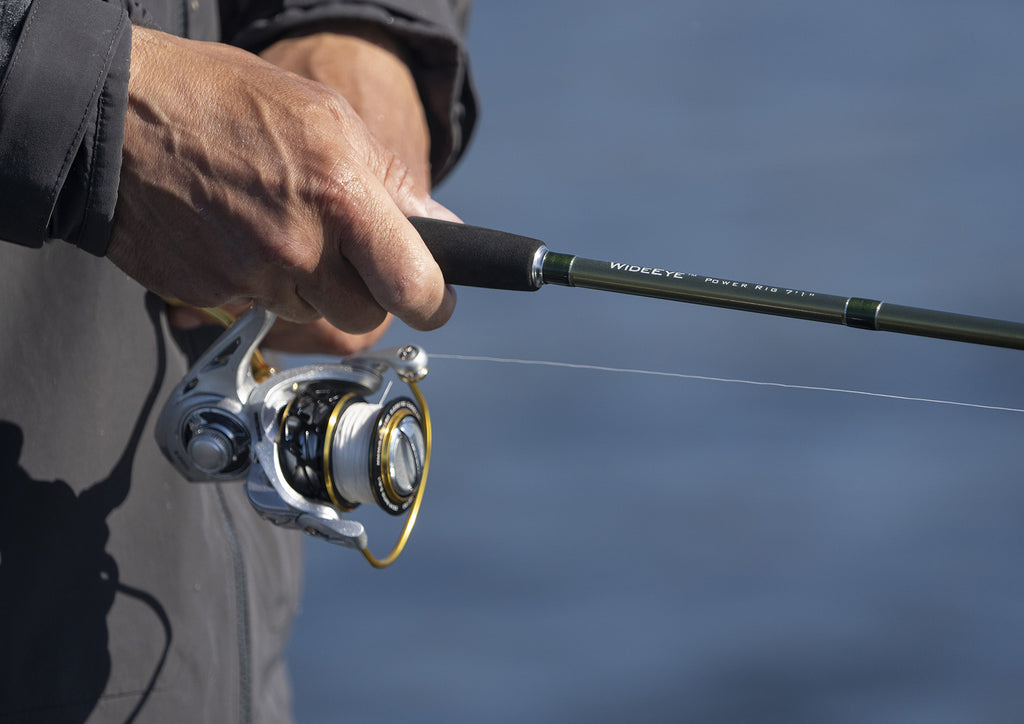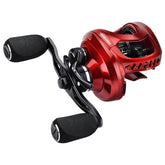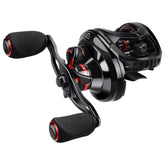
What Does Gear Ratio Mean On A Fishing Reel?
Understanding fishing reel gear ratio on a reel in its most basic form is simply defined as the times a spool of a reel spins with one turn of the handle. On websites, boxes, even on the reels themselves it is normally stated as something like 7.2:1 or 5.4:1 which is 7.2 or 5.4 respectively, complete revolutions of the spool of the reel with one complete revolution of the handle. As one of the most primary attributes of a reel, along with line capacity and drag, I thought it would be important to dive just a bit deeper into what is going on inside of the reel with a touch more detail.
To start off let’s review what is going on, you have a large round gear with many teeth on it that is attached to the handle of a reel. A much smaller gear with teeth that are equivalent in spacing and size is meshed to the larger gear and fastened to the spool of the reel. This is the same for either a baitcasting or spinning type reel. Conceptually, if you think about multiple diameters of a smaller gear “walking” along the larger gear the smaller the diameter of the gear the more times it will complete a revolution. So why not just make tiny, tiny spool gears and have the fastest reels ever? A term I will be commonly using here can now be introduced, the idea of the trade-off. You see, fast reels are great for some types of fishing, they can intake line super quick and get the fish to the boat skidding along the top of the water if you like. The trade off to this speed though is the power of the reel. With high revolutions of a spool gear you trade off the torque of the handle and the work needed to complete the revolution with the handle is increased. Simply put, if you have a high gear ratio reel, it is more difficult to turn the handle then it would be if you have a low gear ratio.
Gear Ratios shown on a couple of KastKing spinning reels

The idea of high gear vs low gear then becomes a factor in the buying decision of the reel. What are you using the reel for? When looking at purely the gear ratio with the main gear, drag and all other components being equal it is feasible for a reel with 10.1:1 reel to bring in a say, 50+ lbs fish. Now, would you want to do that with a 10:1:1 or a 3:1 reel? You are not likely to be able to turn the handle like you did with a 3-5 lbs bass, so there is no super fast retrieve here. The preference on larger and any fish with more mass is to have a lower gear ratio. The torque is increased thus the work needed to turn the handle is decreased. So, is there a balance? How can some anglers be fishing and not truly know what they might catch? When bluefin fishing you could catch a 20lbs school size or 200+lbs guard, how can anyone predict what you will need?
Modern technology has helped us with this and introduced many of the high end reels used for targeting larger fish with a gear ratio like 6/4:1. What we have here is the concept of multiple gear ratios on the reel. The reel is equipped with a spool gear that can be shifted from high to low, just like on a car or bike. Most of these reels can be identified with a button on the handle that when open, is in the higher gear like 6:1 and when you need it, you can push the button in and the reel will shift the gear to 4:1 to increase the torque of the reel. You will gain less line per revolution, but it is easier for the angler to turn. To add even more options, there are triple geared reels on the market but they can be very expensive and not so common place (yet).
A dual ratio reel. An angler can choose to using 6:1 or 3:1 at the click of a button

At this point you may be thinking that the speed or power of a reel is based on gear ratio alone. While it is a major part of it, the gear ratio is not the only facet. Reflect back to the spool gear, I call it this since it is the gear attached to the spool but something to think about is just how big is the spool? If the spool is measured at 1 foot across the intake of line will be MUCH more than a spool that is 1 inch across per revolution. While grossly exaggerated, consider that the same spool that has maximum capacity of line on it is effectively larger than a spool that has minimal line. We can have a larger inner diameter of the spool BUT it will then hold less line. This case can be found on reels such as the KastKing Zephyr finesse baitcaster. These reels are built to have the fastest intake as possible while using very thin or finesse type braid. All of these factors can have an effect on the speed of the reel which is normally described using IPT or Inches Per Turn.
I also mentioned the term of torque, similar to the discussion of speed and other contributing factors to the speed of the reel, the amount of force that an angler can apply to the intake of the line is affected not only by the gear ratio but also by the length of the handle. The longer the handle increases the distance and will then increase the amount of force that can be applied to the gears.
I hope I was able to keep the discussion of gear ratio applicable and relevant to you. Just keep in mind that all reel manufacturers deal with balance. Balance of gear ratio to spool and handle to adjust the speed and power of a reel work right along side the material the gears are made of to the frame, all pieces of a reel should be balanced to achieve a smooth and comfortable reel for the consumer.












